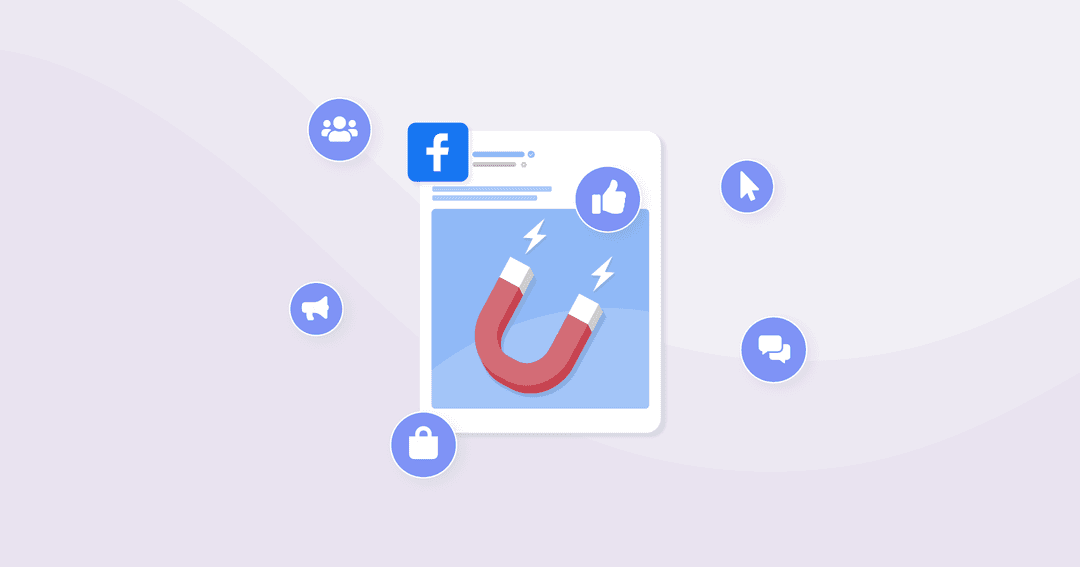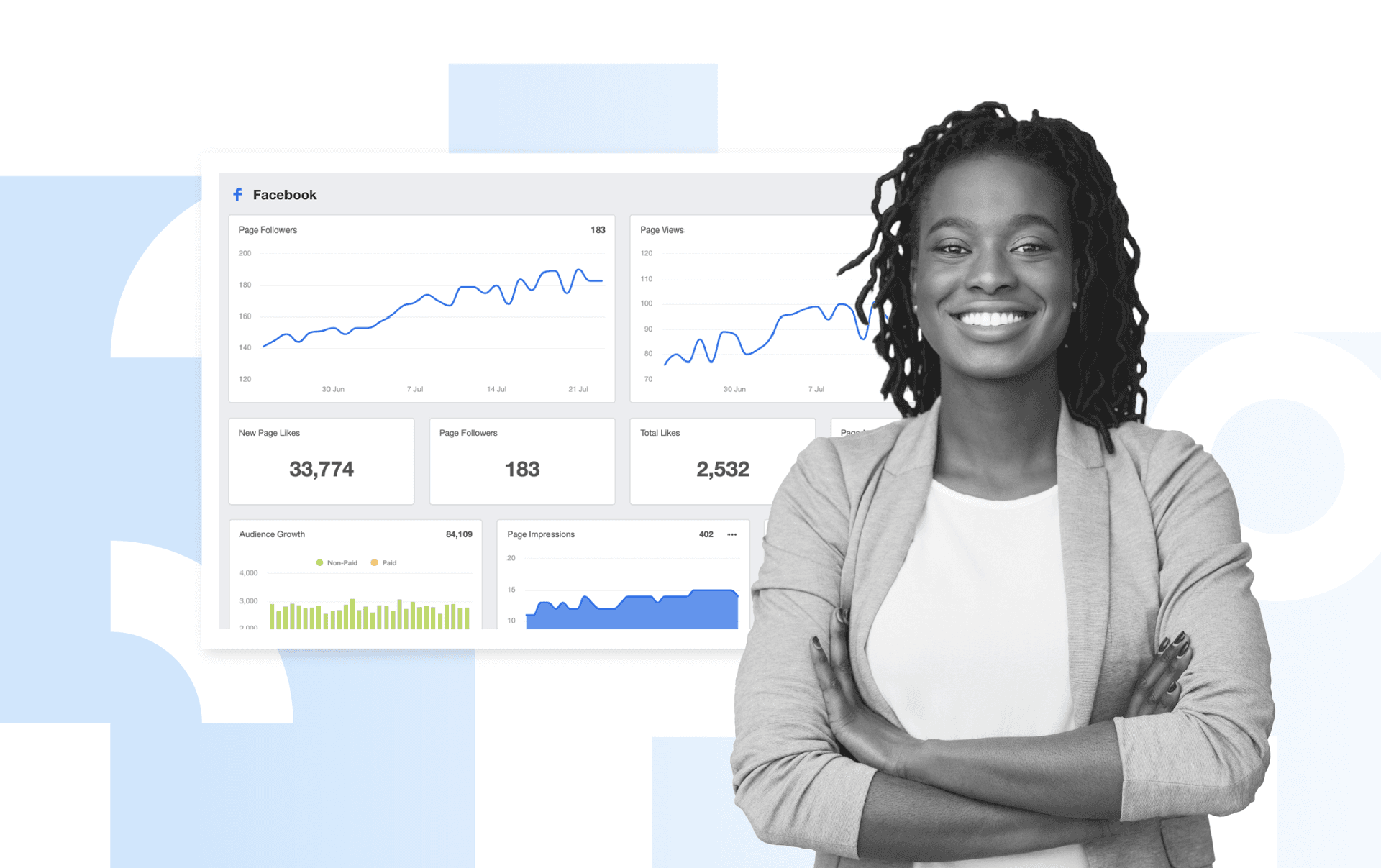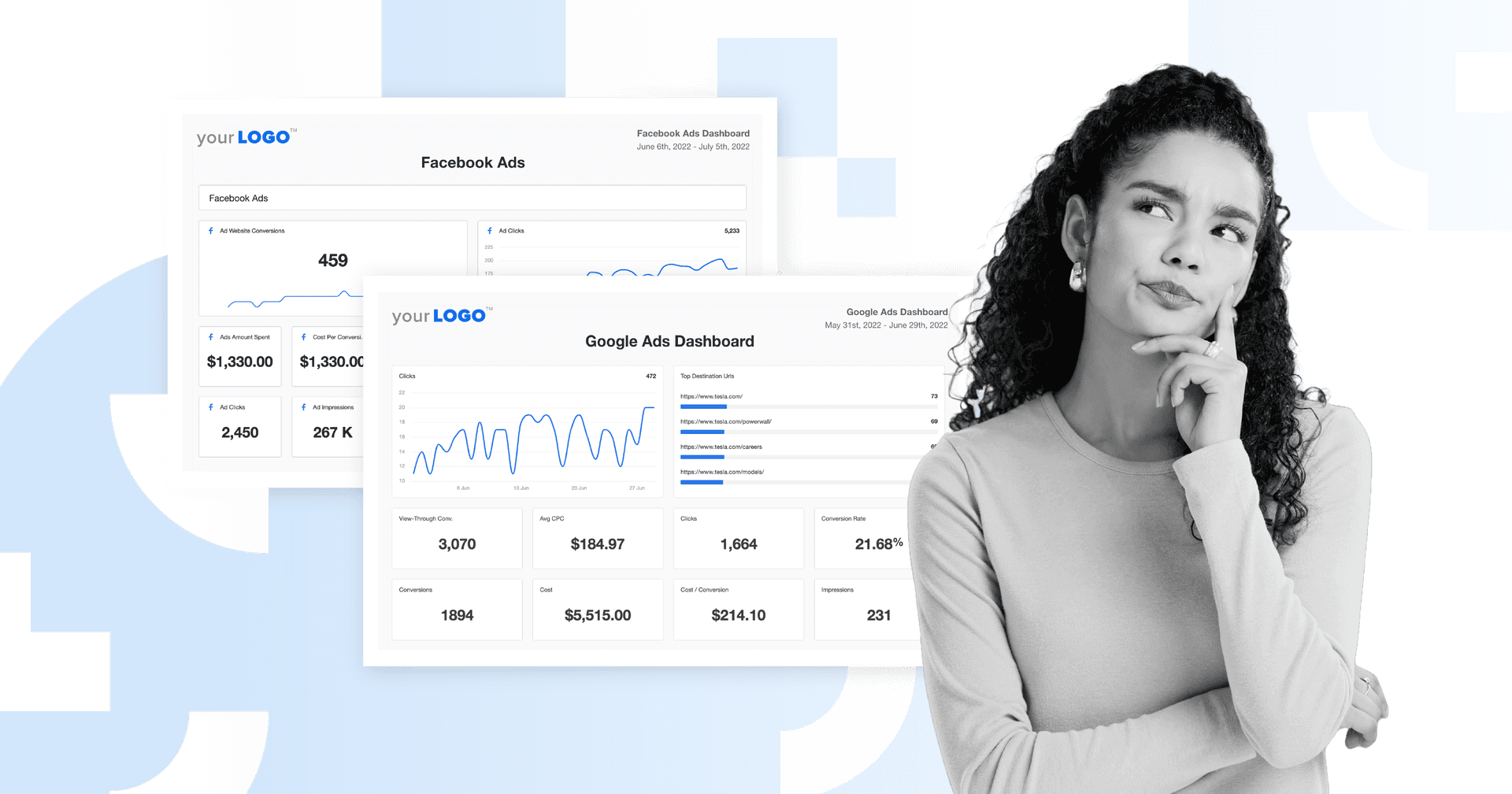Table of Contents
Back in 2021, Facebook announced a redesign of its advertising suite. The new Outcome-Driven Ad Experience (ODAX) will combine the previous eleven campaign objectives into just six, which marks a significant change from the interface your agency is likely used to.
The ODAX revamp came about to address advertisers’ ongoing concerns about the overload of campaign goals to choose from, which often trickled down into the setup process and ad performance. _
Wondering why you haven’t seen the ODAX interface when you logged into the Facebook Business Suite? Not to worry. The rollout is a gradual and ongoing effort with expected completion in Q3 of 2022.
Regardless of where you’re at in Facebook’s rollout, you’re probably wondering, “How is this going to affect my client’s new and existing ads?” Whether you’re in preparation mode for the upcoming change (maybe you even stuck a Post-It note above your desk about it) or already switched to the new interface, you’ve come to the right place to get the scoop on ODAX.
It’s especially concerning when you’ve just set up an intricate ad campaign (optimized for lead generation, for example), only to find out it is now part of a consolidated ODAX campaign. While the ODAX interface is relatively new, there are a few key insights your agency should know. In this article, we’ll give a breakdown of:
After reading this article, you’ll have a greater insight into how ODAX campaigns work, helping you bring your clients closer to their goals.
What is Outcome-Driven Ad Experiences (ODAX)?
Outcome-Driven Ad Experiences (ODAX) refer to the six consolidated campaign goals you can now choose from when creating Facebook ads for your clients. Facebook ads were previously sectioned according to sales funnel stages (awareness, consideration, and conversion) with different campaign objectives, which were:
Brand Awareness
Reach
Traffic
Engagement
App Installs
Video Views
Lead Generation
Messages
Conversions
Catalog Sales
Store Traffic
As a reference, here’s the previous Facebook ad interface:
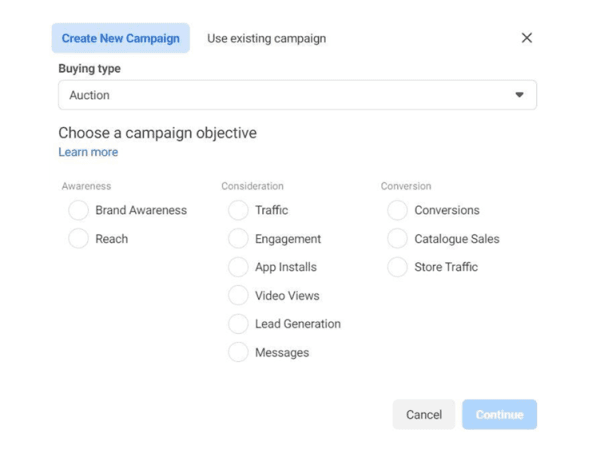
Instead of the previous campaign objectives above, advertisers can now choose from the following 6 ODAX campaign objectives:
1. Awareness
2. Traffic
3. Engagement
5. Leads
6. Sales
To help you visualize this change, here’s a map of the previous Facebook objectives and where it falls on the new ODAX spectrum.
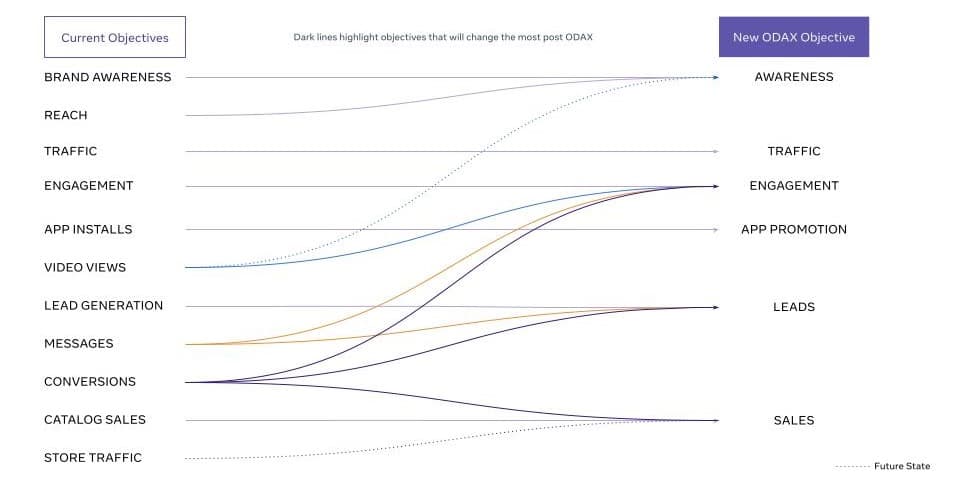
As you can see, an ODAX campaign is much more streamlined than the previous Facebook ad interface. For example, the new “Leads” ODAX goal consolidates the previous “Lead Generation,” “Messages,” and “Conversions” goals.
For other new ODAX objectives, such as “App Promotion” and “Traffic,” there hasn’t been significant consolidation. This means that switching to ODAX will affect some campaigns more than others.
Why Has Meta Switched to Outcome-Driven Ad Experiences (ODAX)?
Before ODAX, settling on one ad goal may have been confusing when creating a Facebook ad campaign. We’re sure you’ve been in the dilemma where you couldn’t decide between “Lead Generation” and “Messages,” as there’s some intersection between the two if a prospect requests more information.
Facebook took these considerations into account and acknowledged that there was no clear-cut solution in these scenarios, as choosing an appropriate campaign objective could have swung in more than one direction.
As a result of advertisers’ feedback, Facebook developed ODAX intending to simplify the entire ad experience. These were Facebook’s cited reasons for the change:
To be in more alignment with the most widely used marketing objectives. This means the outcome-driven ad experience should feed seamlessly into your clients’ marketing strategies.
ODAX is designed to streamline the Facebook ad process and avoid ambiguity and complexity in the setup process. It will also allow advertisers to scale ad campaigns more efficiently.
With ODAX, advertisers can now create cross-channel conversions optimizations that will improve functionality (e.g., creating an ad for a website and shop optimization)
To help advertisers succeed, ODAX will offer more in-platform guidance on choosing an appropriate campaign objective.
The move to ODAX promises greater alignment between the platform and advertiser’s needs and has the potential for increased return on ad spend and shorter ad setup time for busy agencies like you. However, whether these new ad goals live up to that promise is yet to be seen.
Agency Tip: While ODAX is designed to be more intuitive and user-friendly, don’t forget the importance of ad testing (especially if you’ve got more than one idea for your client’s ad). This will help you to improve and optimize client ads continuously.
How Will ODAX Affect Facebook Campaigns?
This is the big-ticket question on every agency’s periphery, especially since there’s much at stake for you and your clients.
There's no need to worry, yet, about ads developed in the pre-ODAX era, as they’ll continue to run normally. However, ads beyond this phase must follow the new ODAX format (i.e., choosing one of the 6 ODAX campaign objectives).
It’s important to note that the “Store Traffic” ad objective available on the previous Facebook ad experience is no longer supported and will become a legacy objective on the ODAX format. As the ODAX rollout continues, Facebook may introduce further tweaks and updates.
Facebook has pointed out that switching to an ODAX campaign will primarily affect advertisers who previously optimized ads for video views, conversions, and messages. This makes sense as these objectives have been consolidated the most.
What Does Facebook ODAX Look Like?
If you haven’t seen what the outcome-driven ad experience looks like just yet, here’s the big reveal!
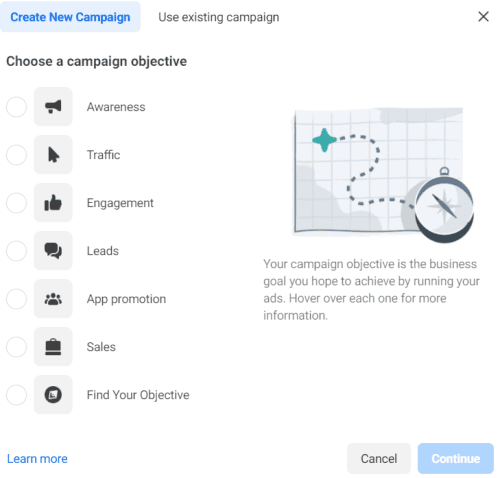
The new design is more straightforward than the previous Facebook ad interface and (hopefully) means you’ll see more streamlined results for your client’s ODAX campaigns.
How to Create Facebook Ad Campaigns with ODAX
Let’s get started on how your agency can maximize the new outcome-driven ad experience.
In this section, we’ll break down the ins and outs of each ODAX campaign objective and tips for creating the best creative for each goal. This helps you to create impactful, meaningful content regardless of your client’s goal.
As Nathan Hawkes, President and Founder at Arcane Marketing, points out, there are different creative approaches that are best for different objectives. “If we're trying to sell a product, a good close-up shot performs better." However, if it's a "Lifestyle" type of ad designed to drive awareness, "showing the use of the product is key. The more of the image we can show, the better of a story it tells, the more engagement we get.”
Here’s what you should know to get the most out of your Facebook ODAX campaign. Remember to bookmark it for later!
1. Awareness
This refers to the discovery phase of your client’s brand. Ads are designed to ensure familiarity and easier brand recognition over time.
Client Objectives: Brand awareness, reach, video views.
For this goal, an image ad with a striking design will impact viewers relatively quickly (especially since users are regularly bombarded with social media content). Remember that most viewers at this stage aren’t necessarily looking for your client’s product or service. However, you still want their brand to be top of mind for any future engagements or even word-of-mouth referrals.
Lengthier content may not be the most effective medium for brand awareness. However, short video or carousel ads that showcase your client’s product or service increase the likelihood of brand recall.
2. Traffic
Choose this goal if you’re directing your client’s prospects to a specific destination, such as a landing page or messaging platform.
Client Objectives: Driving to a website, app, or messenger.
Say your client wants to target users considering their product or service while exploring other options. At this point, users may wish to get further insight from a webpage or may even want to touch base directly to ask more questions.
One possible idea is creating educational video ads, which are instrumental in establishing your client’s credibility. By tapping into the audience’s pain points, you develop content that positions your client as the preferred option over competitor brands and encourages users to visit the client’s website.
For example, a video ad on a frequently asked question will strengthen brand authority without being too forceful or ‘salesy.’ Provide a call to action that links to your client’s preferred destination for users to access more information or follow up if needed.
An image ad also does the trick and often takes less time to develop if you’re pressed for time or working with a limited budget. Similarly, a carousel ad adds visual interest if you have a series of cohesive, educational pointers to share.
3. Engagement
This goal encourages users to engage with your client’s content through a like, comment, share, or other related action. In doing so, you build an audience while also encouraging users to join the conversation. Facebook ads with an engagement goal are great for retargeting people who may have previously interacted with your client’s content.
Client Objectives: Expanded brand reach and engagement.
At this consideration phase, create engaging content that users would be inclined to like, screenshot, or even bookmark/save for later.
This includes image ads that tap into emotions or invite them to comment on a question within the scope of your client’s brand. Even a fun video ad that incorporates humor or any other element would elicit a favorable response.
By doing so, users create a rapport with your client’s brand and may be inclined to convert at a later point. Associating a face with your client’s brand at this stage fosters a sense of connection and trust.
4. App Promotion
Choose this goal if you want users to download your client’s app.
Client Objectives: App installs.
This ad goal is excellent for your clients who want to encourage users to download their app and is geared towards conversion.
You can get pretty creative by incorporating brand elements of the app into the ad image. For example, utilize an image ad that reflects the app’s brand colors and elements or a smartly-designed mockup of what the interface looks like. A carousel ad also showcases different capabilities and features of the app in a more dynamic form.
For this particular goal, it’s essential to clearly show the app’s value proposition and capabilities. If your client’s budget permits, a brief app tutorial as a video ad is also an impactful option.
5. Leads
This goal works well to collect information from leads between the sales cycle's consideration and conversion phases. Prospects may be on the tipping point towards your client’s brand but are still seeking further clarification.
Client Objectives: Lead generation, messages, conversions.
At this stage, create ads that answer any concerns or tackle any objections that may keep a customer from converting. For example, a warm lead for a real estate client may want more details on closing costs before converting. An image ad that addresses this inquiry will encourage the user to fill out a lead form while reiterating your client’s ability to answer their queries.
Similarly, create a dynamic carousel or video ads that showcase your client’s expertise or experience in their field while encouraging users to reach out for more information.
6. Sales
This conversion goal is geared toward clients targeting prospects close to or at the purchasing stage for your client’s product or service online.
Client Objectives: Conversions, catalog sales, store traffic.
Collection ads are an excellent option at the conversion phase, provided your client has a bank of imagery to showcase their products or services.
Other ad formats work well once they include a call to action, well-designed creative, and pricing. The idea is to quickly present the information your client’s audience seeks at this time-sensitive phase as they’re actively looking to invest in a solution.
Utilizing other numerical elements such as percentage discounts, sale end dates, or limited stock quantity will foster a sense of urgency and enforce your client’s value proposition.
Agency Tip: Remember to use the correct ad size for each placement when creating those stellar Facebook ads. The last thing you want is to spend hours on a fantastic graphic and have it cropped on social media— it’s not a good look for your client or agency.
Deciding on an appropriate ODAX campaign objective and having eye-catching creative go hand in hand. Maximize your client’s ad experience by keeping these two essential factors at the forefront of their social media strategy.
Keep Consistent With Reporting Amid ODAX Changes
We hope your current or upcoming ODAX transition is a smooth one!
While it may take a while to adjust, this consolidated format is designed to make Facebook advertising much easier in the long term. From creating a rockstar app promotion ad to capturing those high-value leads, steer your clients to marketing success amidst all these changes.
Remember that there may be some fluctuation in your metrics as you transition to the new ad experience–which might warrant giving your clients a heads-up. With these updates on the horizon, it’s even more critical to keep up with your reporting game.
That’s where an automated reporting platform like AgencyAnalytics can help! It’s as easy as clicking a button to monitor those Facebook ad metrics, create a Facebook ads template, and keep on top of all your client’s social media analytics–all in one place. Plus, use annotations to note exactly when a campaign was launched with or converted to ODAX goals to highlight the impact.

Use the Facebook Ads Reporting Tool alongside a customizable Meta report template to stay one step ahead of the competition while bolstering your clients’ marketing efforts. Try it free for 14 days!
Say goodbye to manually pulling those numbers from the Facebook backend, and hello to more time on your hands to focus on billable work. With real-time client access and customizable, white-labeled reporting, impress your clients and demonstrate your agency’s value.
Regardless of algorithm or social media changes, use AgencyAnalytics to remain consistent and on top of your clients’ reporting.

Written by
Faryal Khan is a multidisciplinary creative with 10+ years of experience in marketing and communications. Drawing on her background in statistics and psychology, she fuses storytelling with data to craft narratives that both inform and inspire.
Read more posts by Faryal KhanSee how 7,000+ marketing agencies help clients win
Free 14-day trial. No credit card required.



